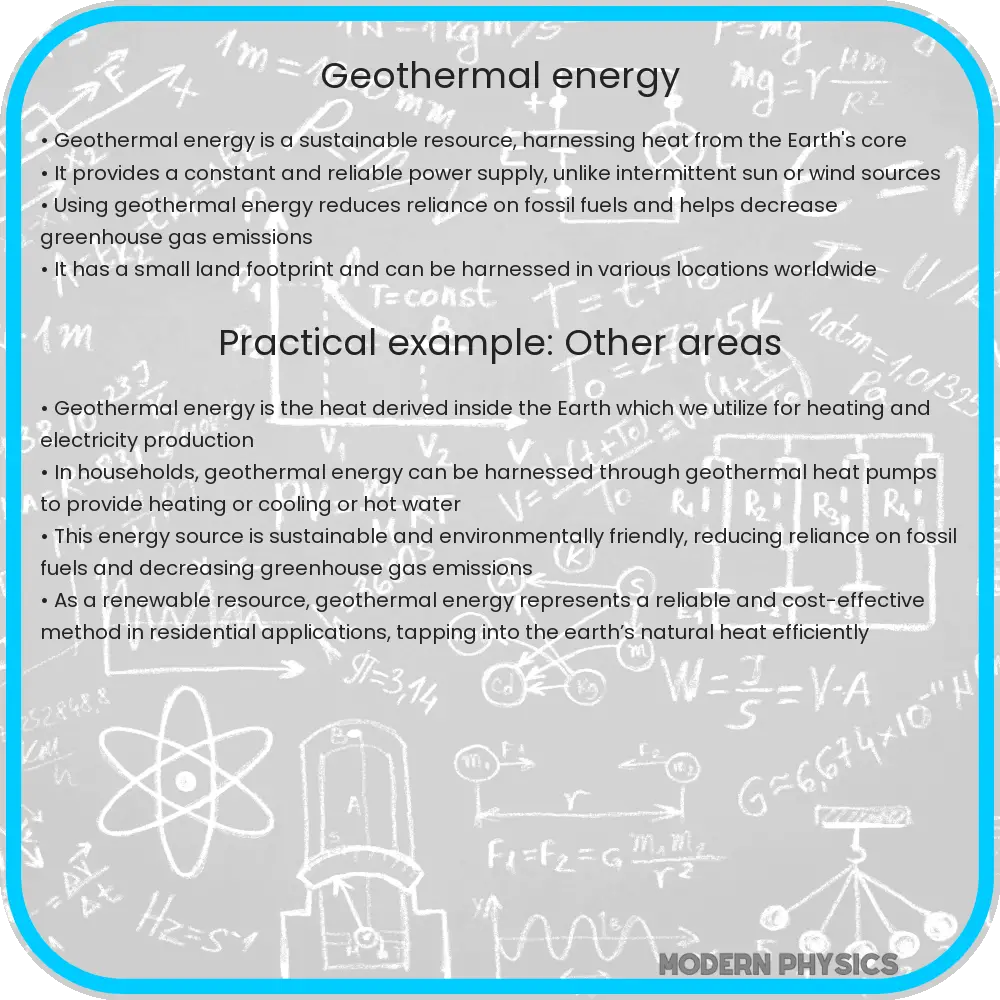Explore the benefits and challenges of geothermal energy, a reliable and sustainable renewable energy source, as we delve into its workings, impact, and future prospects.

Introduction to Geothermal Energy
Geothermal energy, a cornerstone of renewable resources, harnesses the Earth’s intrinsic heat to generate electricity and provide heating solutions. This sustainable energy source is derived from the natural decay of radioactive materials, such as uranium and thorium, within the Earth’s core. Unlike fossil fuels, geothermal energy offers a low-carbon alternative, significantly reducing greenhouse gas emissions and contributing to a cleaner, more sustainable environment.
How Geothermal Energy Works
The process of converting geothermal energy into usable power involves tapping into the Earth’s geothermal resources, which can be categorized into three main types: dry steam, wet steam, and hot rock. Dry steam wells directly use steam from the Earth to drive turbines. Wet steam, or hot water resources, require separation of water and steam before the steam can be used to generate electricity. Hot rock resources, on the other hand, involve injecting cold water into the Earth’s crust where it heats up and is then extracted as steam to produce power.
The Benefits of Geothermal Energy
- Renewability: Geothermal energy is a renewable resource, as the Earth continuously produces heat at a rate far beyond human consumption.
- Environmental Impact: It has a minimal carbon footprint, significantly lowering emissions compared to fossil fuel-based energy sources.
- Reliability: Unlike solar or wind energy, geothermal power is not subject to weather conditions, making it a highly reliable energy source available 24/7.
- Efficiency: Geothermal power plants have high efficiency rates since they can operate at any time of the day or year, regardless of external conditions.
- Sustainability: The utilization of geothermal energy promotes sustainability, ensuring long-term energy security and reducing dependence on imported fuels.
Despite its advantages, the adoption of geothermal energy faces challenges, including high initial investment costs and geographic limitations. However, advancements in technology and increased investment in renewable energy sources are paving the way for broader adoption of geothermal energy, promising a future where it plays a crucial role in our energy mix.
Challenges and Future of Geothermal Energy
The path to widespread geothermal energy adoption is not without its hurdles. High upfront costs associated with drilling and exploration pose significant barriers. Moreover, the success of geothermal energy projects heavily depends on local geological conditions, which can limit the feasibility of this energy source in areas without significant geothermal activity. Despite these challenges, continuous research and technological innovation are aiming to reduce costs and expand the potential of geothermal energy to more regions.
Enhancements in drilling technology and the development of Enhanced Geothermal Systems (EGS) promise to unlock vast amounts of energy from hot rock found deep beneath the Earth’s surface. EGS involves creating artificial reservoirs in areas of hot rock without natural water sources, expanding the geographical scope for geothermal energy projects. This technique could vastly increase the global geothermal energy capacity, making it an even more integral part of the renewable energy portfolio.
Global Impact and Sustainability Goals
Geothermal energy’s role in combating climate change cannot be overstated. By providing a stable and reliable source of renewable energy, geothermal power has the potential to significantly reduce global reliance on fossil fuels, thereby decreasing carbon emissions. Countries rich in geothermal resources, like Iceland and the Philippines, have already demonstrated the vast benefits of integrating geothermal energy into their national grids, achieving remarkable strides towards sustainability and energy independence.
In addition to its environmental benefits, geothermal energy offers substantial economic advantages by creating jobs in geothermal plant construction and maintenance, stimulating local economies, and reducing energy costs in the long term.
Conclusion
As the world moves towards a more sustainable and cleaner energy future, geothermal energy stands out as a key player in the renewable energy mix. Its attributes of reliability, efficiency, and minimal environmental impact, combined with the promise of technological advancements, position geothermal energy as a critical component in achieving global energy sustainability goals. Overcoming its challenges will require concerted efforts in innovation, policy support, and investment. With continued progress, geothermal energy has the potential to power our world more sustainably, supporting a healthier planet for future generations.
